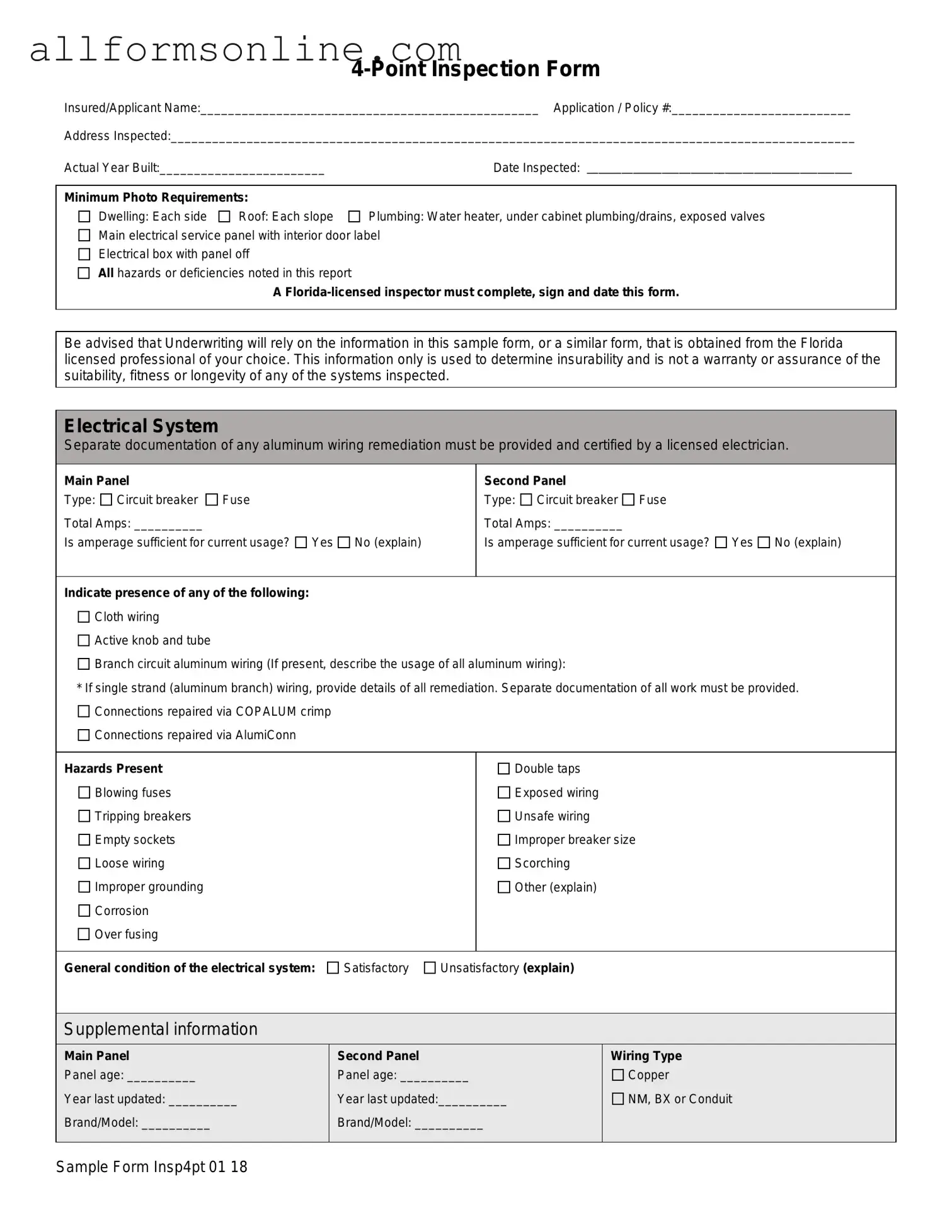What is a 4 Point Inspection Form?
The 4 Point Inspection Form is a document used primarily in Florida to assess the condition of four key systems in a home: the roof, electrical, HVAC (heating, ventilation, and air conditioning), and plumbing. This form helps insurance companies determine whether a property is insurable based on the current state of these systems.
Who needs to complete the 4 Point Inspection Form?
A licensed inspector in Florida must complete, sign, and date the 4 Point Inspection Form. This inspector can be a general contractor, building code inspector, home inspector, or a trade-specific licensed professional, such as an electrician or plumber, who may only sign off on their respective sections.
What information is required on the form?
The form requires details such as the insured/applicant's name, application or policy number, address of the property, and the year it was built. Additionally, it includes sections for each system being inspected, along with specific questions about their condition and any visible hazards.
What are the minimum photo requirements?
Photos must accompany the 4 Point Inspection Form, showing each side of the dwelling, each slope of the roof, the water heater, under-cabinet plumbing, exposed valves, and the main electrical service panel. These images help verify the information provided in the inspection.
How does the inspection affect my insurance application?
Insurance companies use the information from the 4 Point Inspection Form to evaluate the insurability of a property. If any systems are found to be in poor condition or if there are visible hazards, it may impact your ability to obtain coverage.
What happens if the inspection reveals issues?
If the inspection identifies any deficiencies or hazards, it is important to address these issues before submitting your insurance application. The agent is responsible for ensuring that the application meets all requirements, including having systems in good working order.
Is the 4 Point Inspection Form mandatory for all insurance applications?
While the 4 Point Inspection Form is not the only acceptable document, it provides the minimum level of detail required for underwriting. Any alternative inspection report submitted must include similar information to be considered valid.
How often should I get a 4 Point Inspection?
It is advisable to have a 4 Point Inspection performed when applying for a new insurance policy, especially if the property is older or if significant renovations have been made. Regular inspections can help identify issues before they become serious problems.
What if I have additional comments or observations after the inspection?
The form includes a section for additional comments or observations. This space allows the inspector to note any updates made to the systems, visible hazards, or any systems that are not functioning properly. Detailed descriptions help provide a clearer picture of the property's condition.
